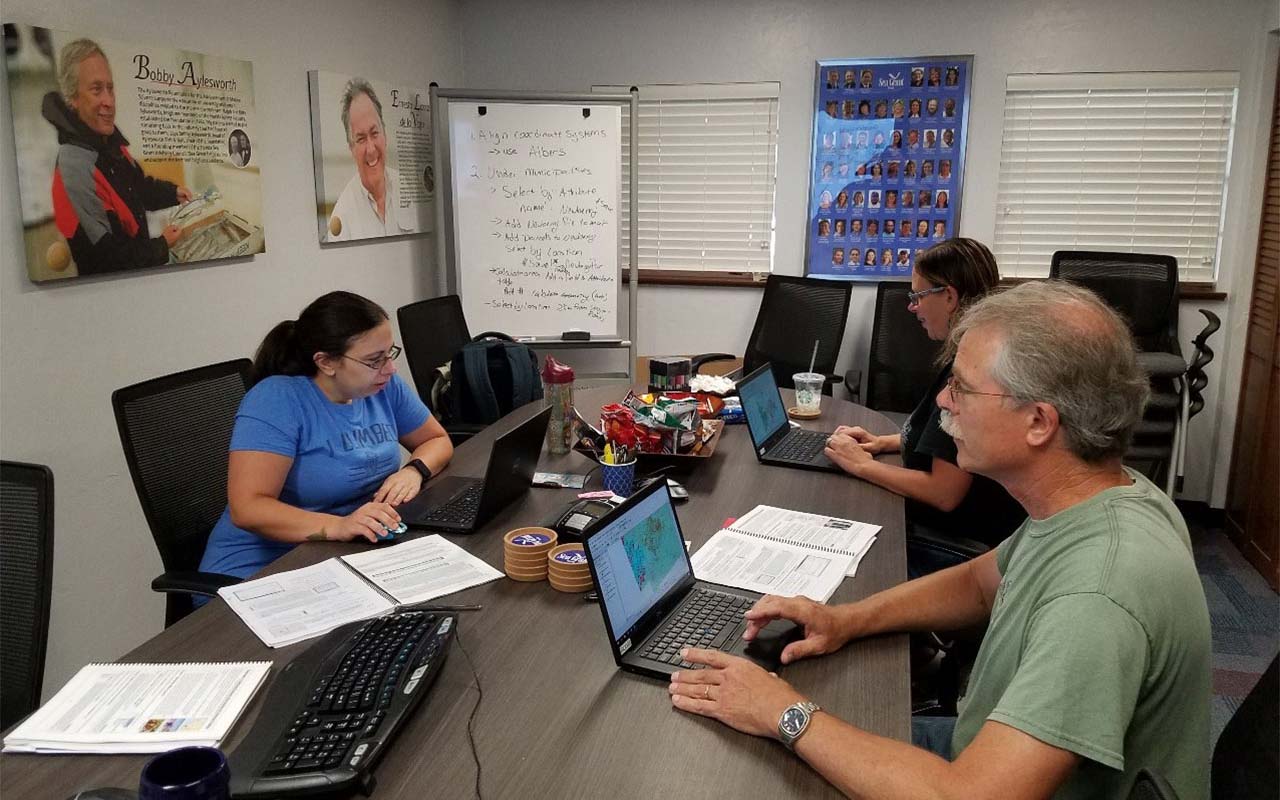
New Geographic Information System Lab at FSC
Jul 23, 2019
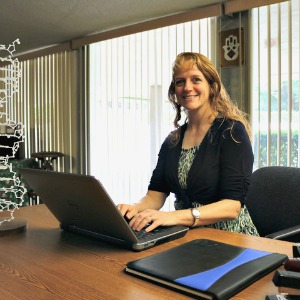
Geographic Information System (GIS) technology is a standard research tool for studying relationships among organisms within their habitats. The technology allows for the collection and analysis of sophisticated data for authentic, original research projects. While the faculty at FSC have been able to incorporate some aspects of GIS with students, funding was not available to purchase the equipment, software and computers for students to fully utilize the power of this technology. Thanks to a $20,000 grant from the Mosaic Company, a new lab will open in the fall that will be used by students in classes and for research.
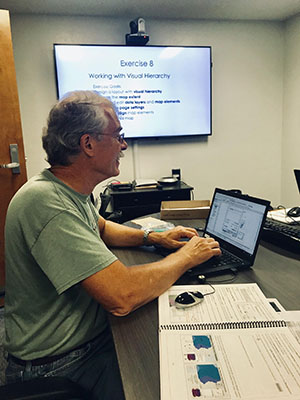
“With this technology, students will develop the skills necessary to collect data and gain competency in complex data analytics,” said Nancy Morvillo, Chair of the Biology Department. “Experience with GIS will better prepare our students for employment immediately after graduation, as well as make them highly competitive for graduate programs.”
GIS technology is critical for studying anthropogenic influences on the environment. It allows for research in sustainable development, archaeology, ecology, and climatology.
The Mosaic Company produces potash and phosphates as nutrients for crop growth. They employ more than 12,000 people in six countries. Although their headquarters is in Minnesota, the Mosaic Company has offices and facilities throughout Florida. The company conducts research, and recognizes the need to train the next generation of scientists.
“We now finally have the ability to provide excellent opportunities for our students to learn and utilize GIS,” said Dr. Morvillo. “This has been a goal of our department for several years. We are very grateful to the Mosaic Company for making this happen. This is very exciting!”
Even with limited facilities, faculty and students have made good use of GIS. For example, the research of Leyna Stemle ‘18 and Kristen Martinet ’18 calculated the home range of the Striped Mud Turtle from Circle B Bar Reserve in Lakeland. Both worked closely with Dr. Gabe Langford.
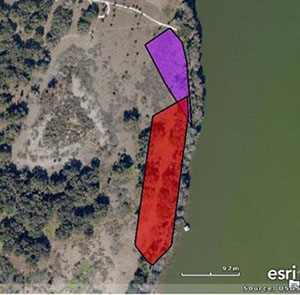
“We recently submitted this research project to the journal Herpetological Review for publication, which is an exciting accomplishment for an undergraduate project,” said Dr. Langford. “I anticipate formal training and greater access to GIS technology will increase FSC's ability to conduct meaningful research projects with students and train future environmental and marine scientists."
After graduating, Kristen immediately put her GIS skills to work. She was employed at an environmental consulting firm in Tampa for the year. She will begin a Master’s program this fall at the University of Idaho in the Bioinformatics and Computational Biology program. Leyna went on to win a Fulbright Scholarship and spent nine months researching sea turtle conservation in Ghana. She begins her Ph.D. program in Biology at the University of Miami this fall.
During an interview at the end of her senior year, Leyna spoke about her research experience at FSC. “It involved a mark-recapture study- which involved hand-making 40 traps!- and radio telemetry,” she explained. “It has been amazing to work with a reserve and get to do hands-on research that was catered towards my interests and career.”
Some projects that faculty and students can now address with GIS technology include analysis of invasive species on the health of Florida’s ecosystems, delineation of the cycle of parasitic infections in host animals in Central Florida, and investigations of the effects of nutrient runoff and pollution on plant life in Tampa Bay.
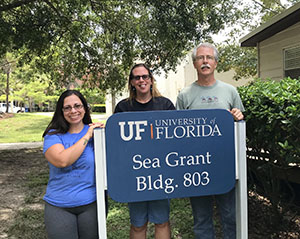
The Mosaic Company grant also provided funding for three faculty members from FSC to attend a Florida Sea Grant-University of Florida GIS training workshop in Gainesville this month. Dr. Eric Kjellmark, Dr. Christy Wolovich, and Professor Jamie Daugherty were very excited to become more familiar with the software and to plan how best to incorporate the technology into their classes and research. During the 30 hours of hands-on training, the faculty gained experience using ArcGIS to create and edit maps and used geoprocessing tools to perform analyses of spatial data.
“This was such great training,” said Professor Daugherty. “I went from not having spent much time on ArcGIS in years, to being able to create maps and knowing how to source additional information. All in just 3 and a half days!”
Each of the faculty members immediately saw applications for their courses and their research.
“I am working on a map of my research locations in the Bahamas,” said Dr. Kjellmark. “I plan to use it to produce maps of extreme weather events for my Disasters, Civilization and the Environment class. The software is only limited by the data and maps available on the web and there are a lot of maps and data out there.
“I see this as a tool that I can use in a variety of classes,” noted Professor Daugherty. “Field Ecology can use this as part of nearly every lab, most specifically in wetland delineation. This will also work well in the labs that involve the survey of large areas. In Environmental Issues we can work with existing data to look at biodiversity and habitat loss.”
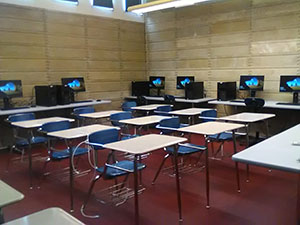
“I now feel comfortable using ArcGIS to help solve real-world problems related to our natural resources,” said Dr. Wolovich. “I will now be able to expand the use of ArcGIS in my Field Ecology course and will apply what I have learned to research into the conservation and management of endangered Western red colobus monkeys.”
The Mosaic grant has provided the tools and expertise that students need. In Spring 2020, for the first time, students at FSC will have the opportunity to take a course in Biological Geography and GIS, to be taught by Dr. Wolovich. This course will provide students with GIS-related skills that will prove invaluable as they move forward in their scientific careers.
And what will the future bring? The Biology Department is already establishing collaborations across campus, with the Computer Science and English departments.
“And now that we have the technology, collaborations with colleagues at other institutions across the country and around the world are possible- and likely,” said Dr. Morvillo.
“The program has thousands of options to choose from,” said Dr. Kjellmark. “There are so many possibilities.”